10 Best Oregon National Parks and Sites
The best Oregon parks and sites include the deepest lake in the U.S. and prehistoric fossil beds.
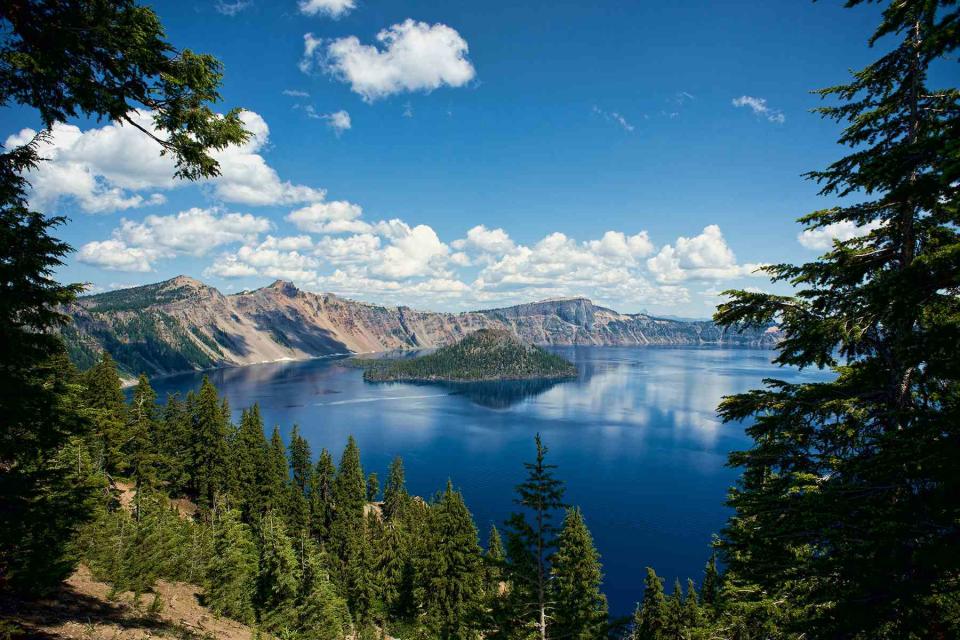
Bruce Shippee/Getty Images
The state of Oregon has a little bit of everything — from snow-dusted mountains to the Pacific coastline. Beyond the state’s varied landscape is a long human history that includes several migrations and cross-country expeditions, and this history is honored and protected at Oregon national parks and sites. These special corners of the state showcase the beauty and history of Oregon, a state with 111,619 miles of rivers and streams, 296 miles of coastline, and hundreds of lakes. Ready to plan your trip to the Beaver State? Here are ten of the best national parks and sites in Oregon.
Oregon National Parks
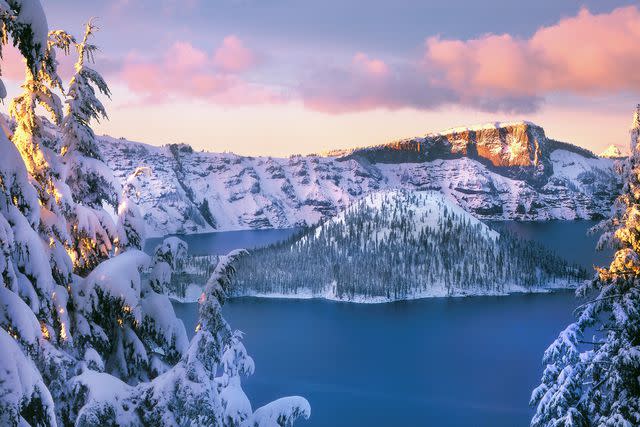
Steve Terrill/Getty Images
Crater Lake National Park
It may be Oregon’s only official national park, but Crater Lake National Park stands out among the nation’s most beloved landscapes. The park’s crown jewel is Crater Lake, the deepest lake in the U.S. and one of the most pristine bodies of water on Earth. But beyond its apparent beauty, the lake has one of the world’s most interesting origin stories — it was created when a volcano collapsed, creating a huge crater that is filled by rain and snow.
Today, park visitors can take the Rim Drive around the crater or hop on a boat to Wizard Island, a remnant cinder cone near the western edge of the lake.
Oregon National Monuments, Trails, Recreation Areas, and Sites
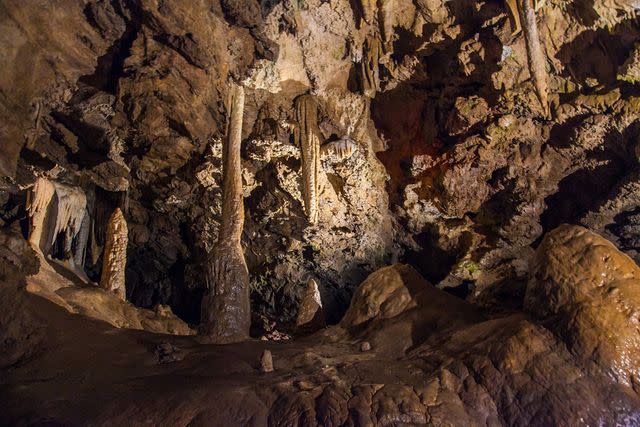
fdastudillo/Getty Images
Oregon Caves National Monument & Preserve
Known as the “Marble Halls of Oregon,” this network of dark, twisting passages deep within the Siskiyou Mountains is easily one of the state’s most awe-inspiring natural wonders. In addition to the network of underground caves and passageways, there is a 4,554-acre park with hiking, camping, and wildlife spotting, including bears, cougars, and bobcats.
Fort Vancouver National Historic Site
Four unique sites, each with a different story, are found at Fort Vancouver National Historic Site. It provides a glimpse into the area’s fur trading history, the U.S. Army's Vancouver Barracks, the site’s role in the evolution of aviation, and the very origin of the Pacific Northwest. It’s Oregon’s go-to destination for those looking to understand the history of the state and those who want to revel in the beauty it holds today.
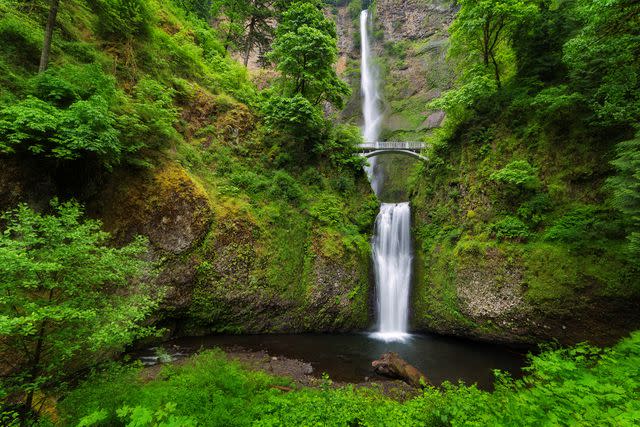
Anna Gorin/Getty Images
Ice Age Floods National Geologic Trail
The history of this national trail dates back to the end of the last Ice Age when an ice dam burst in northern Idaho and flooded the Columbia River before reaching the Pacific Ocean. The event changed the landscape of the Pacific Northwest, including parts of Oregon, Montana, Idaho, and Washington. In Oregon, the flood’s remnants include Hat Rock, a monolith carved by the flood, and the Tualatin Ice Age Trail, which has remnants of 18,000-year-old ice, rock, and bone.
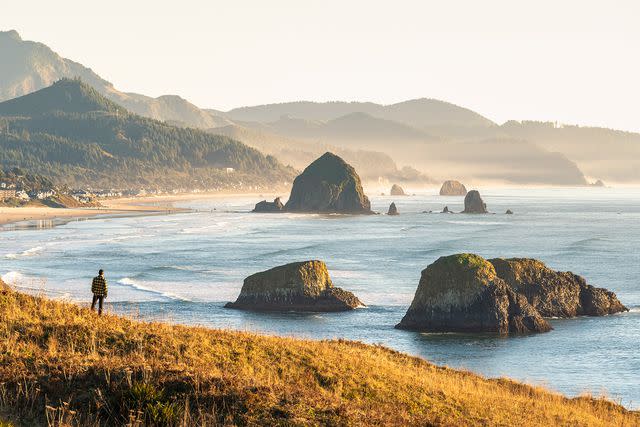
Francesco Vaninetti Photo/Getty Images
Lewis & Clark National Historic Trail
While the Lewis & Clark National Historic Trail traverses 16 states and almost 4,900 miles, the adventurers’ destination was the coastline of modern-day Oregon and Washington. To that end, Oregon is full of historic sites, including the Netul Landing & River Trail, where Lewis and Clark paddled up and established a winter camp, and Les Shirley Park, where the explorers searched for a beached whale to bolster their dwindling supplies.
Lewis and Clark National Historic Park
The most popular site at this park is the replica of Fort Clatsop, Lewis and Clark’s winter encampment. Once you learn about their journey, you can go on an adventure yourself — the historic park has an impressive network of trails that lead through rain forests and offer stunning views of the Oregon coastline.
Nez Perce National Historical Park
The Nez Perce National Historical Park spreads across four states — Idaho, Montana, Washington, and Oregon — and features a whopping 38 sites that tell the story of the Nimíipuu (Nez Perce) people who have long called this land home. In Oregon, sites include the Joseph Canyon Viewpoint, an overlook that showcases one of the Nimíipuu’s winter homes (where Hin-mah-too-yah-lat-kekt, also known as Chief Joseph, was supposedly born), and the grave site of Chief Joseph.
Oregon National Historic Trail
Many states boast a piece of the Oregon National Historic Trail, but none are more important than Oregon, which marked the end of the cross-country journey. The trail cuts through the northern part of the state and showcases ruts from the original travelers’ wagons, along with plenty of historic sites and museums.
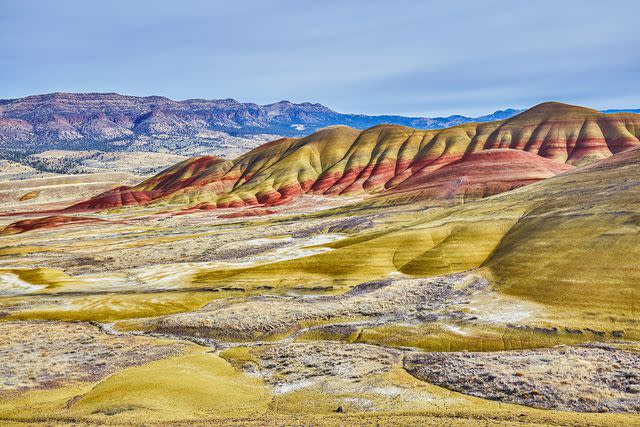
Peter Unger/Getty Images
John Day Fossil Beds National Monument
An important piece of the Earth’s history is preserved at John Day Fossil Beds National Monument, which showcases past ecosystems, plant and animal evolution, and a changing climate in its colorful rock formations. The monument encompasses over 40 million years of history — which you can witness for yourself on one of the site’s scenic hikes.
California National Historic Trail
The greatest mass migration in American history took place in the 1840s and 1850s when over 250,000 people made their way toward California in search of gold and farmland. From Oregon, the California National Historic Trail kicks off west of Salem and heads south. One popular stop is the Douglas County Museum, which is Oregon's largest natural history collection.
For more Travel & Leisure news, make sure to sign up for our newsletter!
Read the original article on Travel & Leisure.


